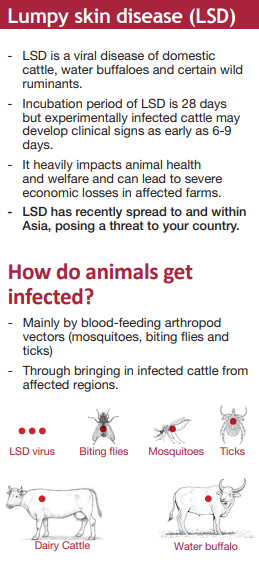Lumpy Skin Disease | 15 Jun 2022
Why in News?
Recently, around 1,229 cattle across five districts of Gujarat have been infected with Lumpy Skin Disease (LSD). 
What is Lumpy Skin Disease?
- Causes:
- LSD is caused by infection of cattle or water buffalo with the poxvirus Lumpy Skin Disease Virus (LSDV).
- According to the Food and Agriculture Organization (FAO), The mortality rate is less than 10%.
- Lumpy skin disease was first seen as an epidemic in Zambia in 1929. Initially, it was thought to be the result of either poisoning or hypersensitivity to insect bites.
- Transmission:
- Lumpy skin disease is primarily spread between animals by biting insects (vectors), such as mosquitoes and biting flies.
- Symptoms:
- It primarily consists of fever, fluid excretion from eyes and nose, dribbling of saliva from the mouth and blisters on the body.
- The animal stops eating and faces problems while chewing or eating, resulting in reduced milk production.
- Prevention and Treatment:
- Vaccination against these diseases is covered under the Livestock Health and Disease Control Programme of India.
- There are no specific antiviral drugs available for the treatment of lumpy skin disease. The only treatment available is supportive care of cattle. This can include treatment of skin lesions using wound care sprays and the use of antibiotics to prevent secondary skin infections and pneumonia.
- Anti-inflammatory painkillers can be used to keep up the appetite of affected animals.
